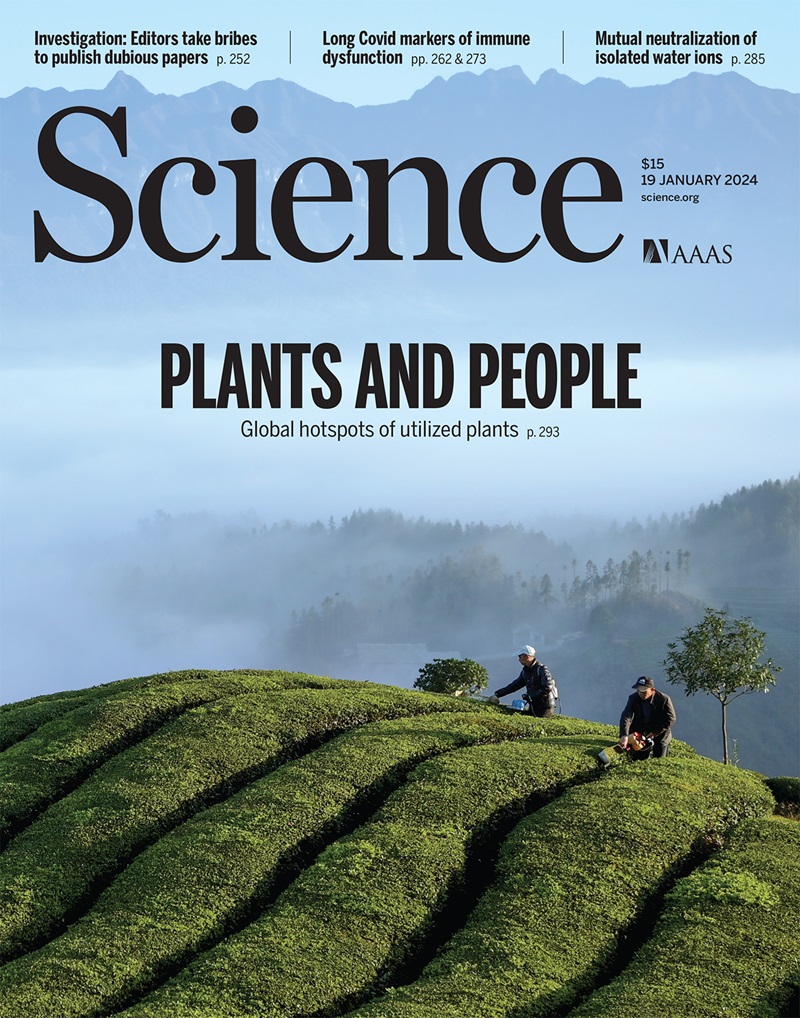A high-temperature nanostructured Cu-Ta-Li alloy with complexion-stabilized precipitates
IF 45.8
1区 综合性期刊
Q1 MULTIDISCIPLINARY SCIENCES
引用次数: 0
Abstract
We present a bulk nanocrystalline copper alloy that can operate at near-melting temperatures with minimal coarsening and creep deformation. The thermal stability of the Cu-3Ta-0.5Li atomic % (at %) alloy is attributed to coherent, ordered L12 Cu3Li precipitates surrounded by a tantalum-rich atomic bilayer phase boundary complexion. Adding 0.5 at % lithium to the immiscible Cu-Ta system changes the morphology of the nanoscale precipitates from spherical to cuboidal while simultaneously tailoring the phase boundary. The resultant complexion-stabilized nanoscale precipitates provide excellent thermal stability, strength, and creep resistance. The underlying alloy design principles may guide the development of next-generation copper alloys for high-temperature applications such as heat exchangers.
一种具有络合稳定沉淀的高温纳米Cu-Ta-Li合金
我们展示了一种可在接近熔融温度下工作且粗化和蠕变变形极小的块状纳米结晶铜合金。Cu-3Ta-0.5Li 原子% (at %) 合金的热稳定性归功于富含钽的原子双层相界复合体所包围的连贯、有序的 L1 2 Cu 3 Li 沉淀。在不相溶的铜-钽体系中加入 0.5 at % 的锂后,纳米级沉淀物的形态从球形变为立方体,同时相界也发生了变化。由此产生的络合稳定的纳米级沉淀具有出色的热稳定性、强度和抗蠕变性。合金的基本设计原理可指导下一代铜合金的开发,用于热交换器等高温应用。
本文章由计算机程序翻译,如有差异,请以英文原文为准。
求助全文
约1分钟内获得全文
求助全文
来源期刊

Science
综合性期刊-综合性期刊
CiteScore
61.10
自引率
0.90%
发文量
0
审稿时长
2.1 months
期刊介绍:
Science is a leading outlet for scientific news, commentary, and cutting-edge research. Through its print and online incarnations, Science reaches an estimated worldwide readership of more than one million. Science’s authorship is global too, and its articles consistently rank among the world's most cited research.
Science serves as a forum for discussion of important issues related to the advancement of science by publishing material on which a consensus has been reached as well as including the presentation of minority or conflicting points of view. Accordingly, all articles published in Science—including editorials, news and comment, and book reviews—are signed and reflect the individual views of the authors and not official points of view adopted by AAAS or the institutions with which the authors are affiliated.
Science seeks to publish those papers that are most influential in their fields or across fields and that will significantly advance scientific understanding. Selected papers should present novel and broadly important data, syntheses, or concepts. They should merit recognition by the wider scientific community and general public provided by publication in Science, beyond that provided by specialty journals. Science welcomes submissions from all fields of science and from any source. The editors are committed to the prompt evaluation and publication of submitted papers while upholding high standards that support reproducibility of published research. Science is published weekly; selected papers are published online ahead of print.
 求助内容:
求助内容: 应助结果提醒方式:
应助结果提醒方式:


